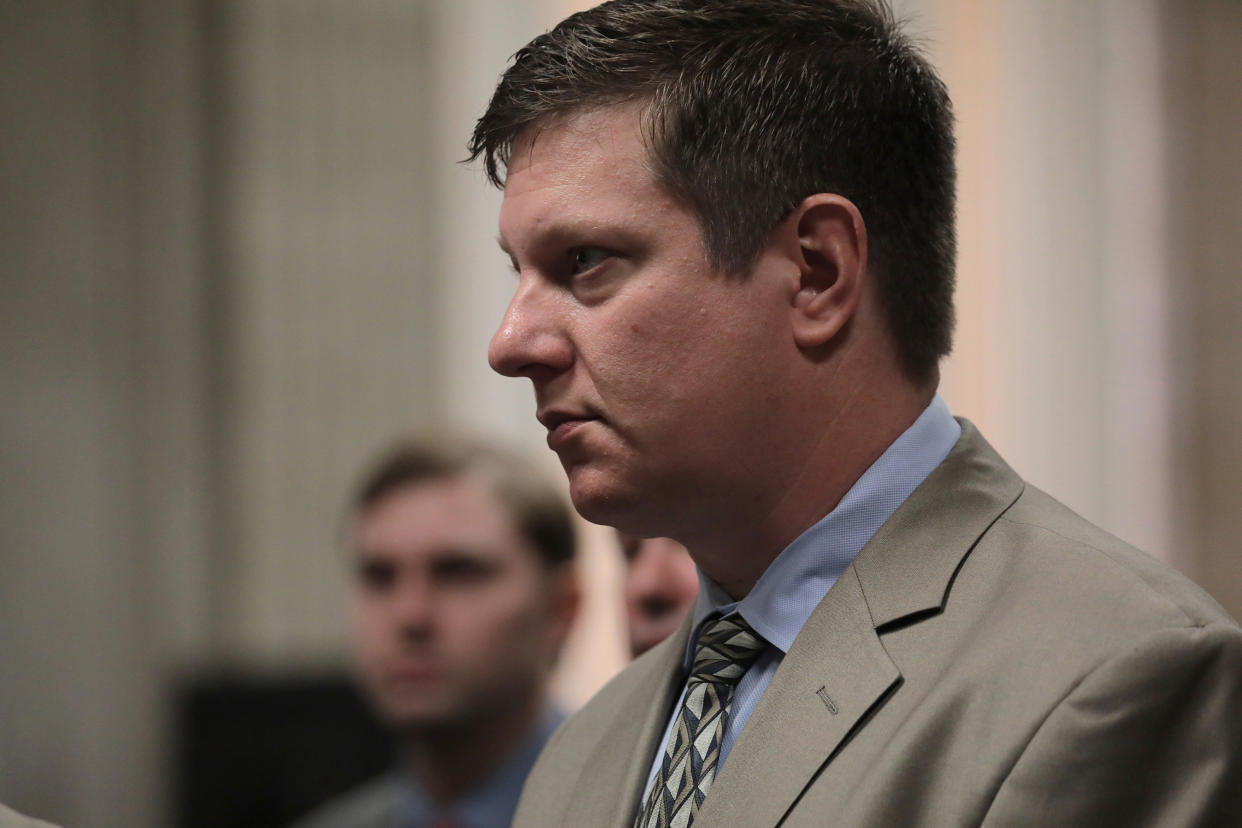Jason Van Dyke Looked At Laquan McDonald And Saw An American Stereotype

It was the bug eyes that he remembered.
“His face had no expression. His eyes were just bugging out of his head. He had these huge white eyes just staring right through me,” Chicago police officer Jason Van Dyke testified, describing Laquan McDonald, the black 17-year-old Van Dyke killed in 2014. “I was yelling at him, ‘Drop the knife!’”
Van Dyke was on the witness stand Tuesday to tell his version of what happened the night he emptied his 9 mm into McDonald. Van Dyke is charged with six counts of first-degree murder and 16 counts of aggravated battery — one for each bullet he fired into McDonald’s body. The defense maintains that McDonald had been behaving erratically (an autopsy found PCP in his system), that Van Dyke was aiming only at the knife McDonald was holding.
That’s the official defense, at least. But the subtext of Van Dyke’s testimony is that he looked at a 17-year-old boy and saw something out of the American treasury of psychic horrors: a black brute.
You’ve seen variations on the caricature. Dark men with glowing white eyes. The coon, the sambo, the pickaninny, the black buck. They are all potent manifestations of the popular belief that black men are violent, unstoppable beasts.
In D.W. Griffith’s “Birth of a Nation,” Gus, a freedman and militia captain, chases after a white woman. He moves erratically. His eyes bug out of his head. His mouth is agape. He seems possessed, lunging toward her, advancing on her, closing in. The woman runs for her life. She gets to the edge of a cliff. She instructs him to stay away a number of times before threatening to jump. He doesn’t heed her warnings. She jumps.
On Tuesday, Van Dyke claimed the teen was “advancing on” him. When Van Dyke and his partner stepped out of their squad car, he said, he saw McDonald “extend out a knife, flicking it toward his side.” Van Dyke said that he told McDonald to drop the knife a number of times, but the teen “never stopped.”
“We never lost eye contact,” Van Dyke added. “His eyes were bugging out of his face. His face was expressionless.”
Anti-black imagery from the Jim Crow era is the cultural residue of American apartheid. It has skewed the ways that white people perceive black folks. It has fueled the idea that black people are more violent and commit more crimes, which in turn helps explain why police are quicker to shoot black folks than their white peers.
Van Dyke’s defense rests squarely on the premise that he did what he had to do. On Tuesday his attorney coaxed him toward an explanation of why he shot the teen 16 times. Van Dyke explained that for a moment he stopped firing when McDonald fell to the ground. Then, Van Dyke said, he saw McDonald “starting to push up from the ground.” Video of the killing doesn’t bear out that version of events, but wittingly or not, Van Dyke was drawing on something deeper than individual memory. This was a cultural memory. Despite being wounded, the bug-eyed black teen with a history of violence was still coming toward him.
Van Dyke noticed something else too: “His eyes are still bugged out.”
Love HuffPost? Become a founding member of HuffPost Plus today.
This article originally appeared on HuffPost.

